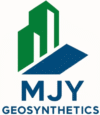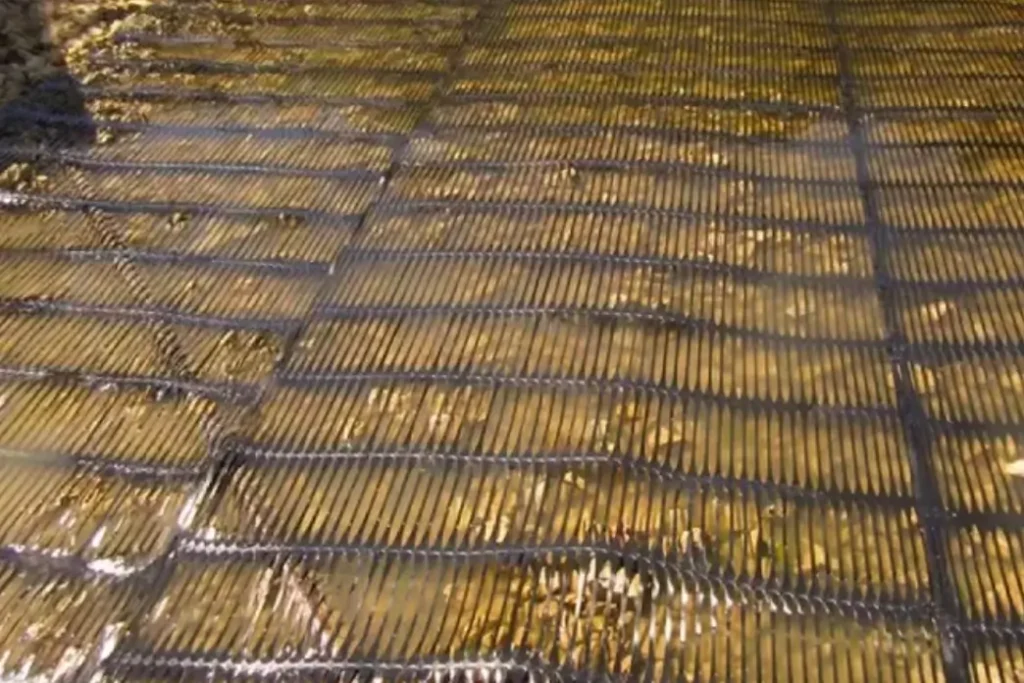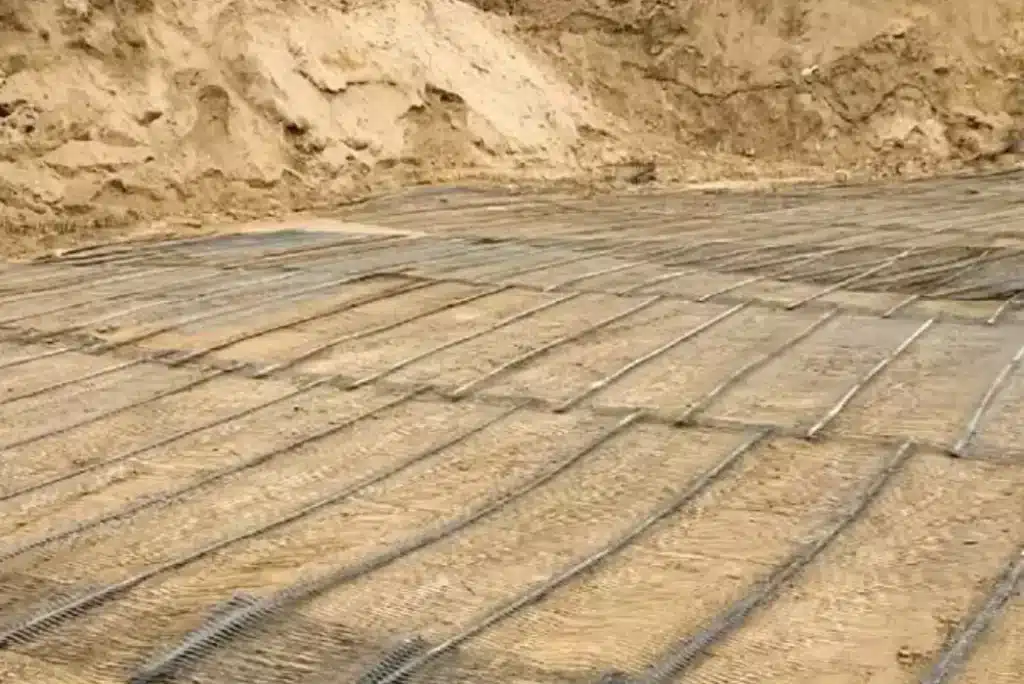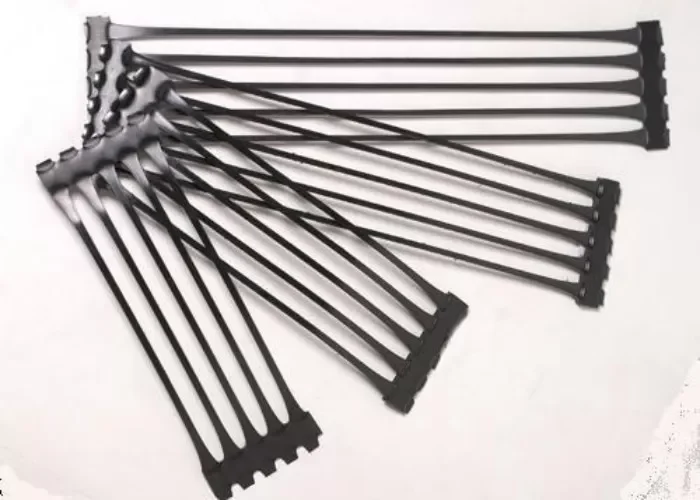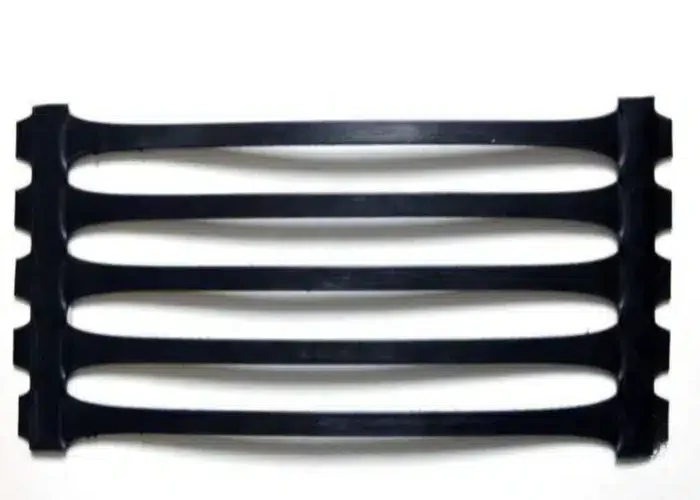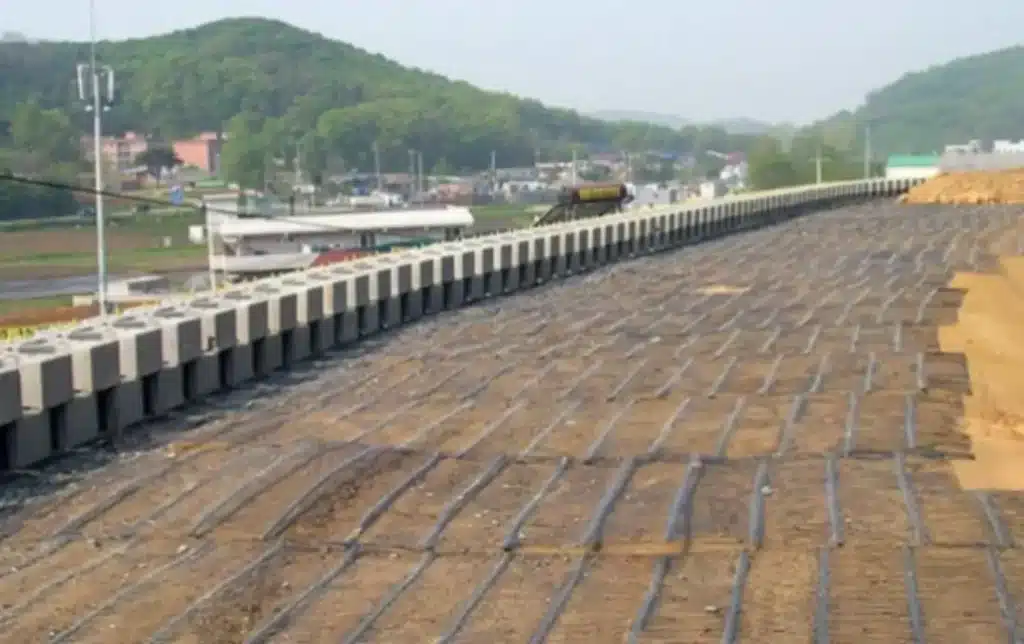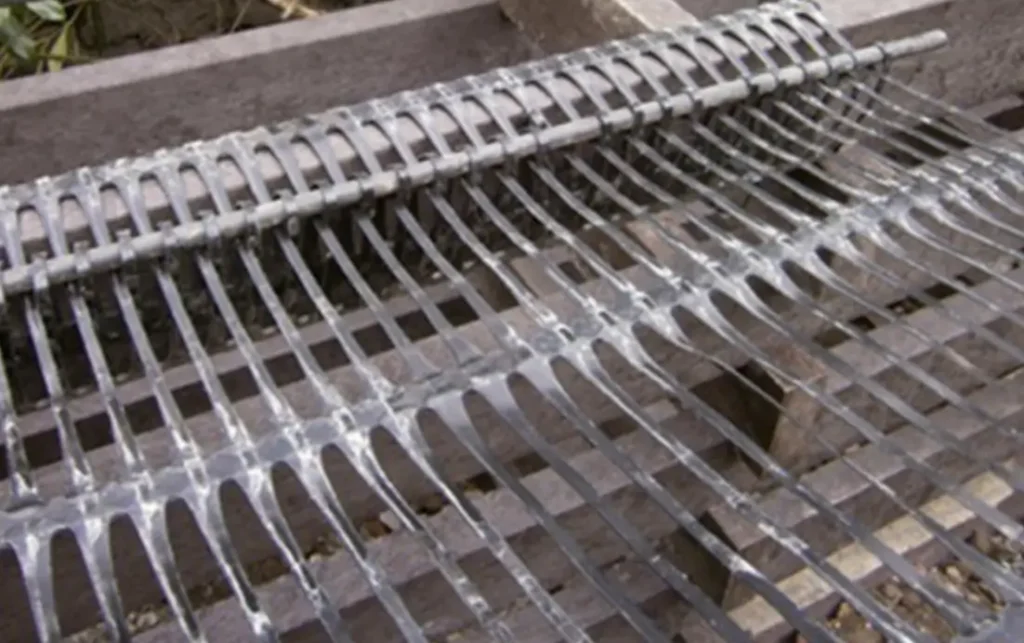Uniaxial Geogrid
MJY manufactures ISO-certified uniaxial geogrids designed for superior soil reinforcement and retaining wall applications. As a trusted uniaxial geogrid manufacturer and supplier, our products are engineered with high tensile strength in one direction, making them ideal for retaining walls, embankments, and slope stabilization projects.
What is Uniaxial Geogrid?
A uniaxial geogrid is a type of geosynthetic reinforcement material designed with strength concentrated in one direction—usually the machine (longitudinal) direction. It is produced from high-density polyethylene (HDPE) or polyester (PET) through extrusion, punching, and stretching processes.
GEOGRIDS SPECIFICATIONS
Our company warehouse products
| Properties | BGUG25 | BGUG35 | BGUG50 | BGUG80 | BGUG110 | BGUG120 | BGUG150 | |
|---|---|---|---|---|---|---|---|---|
| Width(m) | ||||||||
| Length/roll(m) | ||||||||
| Tensile Strength≥kN/m | HDPE | 25 | 35 | 50 | 80 | 110 | 120 | 150 |
| PP | 25 | 35 | 50 | 80 | 110 | 120 | 150 | |
| Elongation (%) | HDPE | 11-16 | ||||||
| PP | 10 | |||||||
| Strength at 2% elongation≥kN/m | HDPE | 6 | 9 | 10 | 23 | 30 | 35 | 46 |
| PP | 7 | 10 | 12 | 26 | 32 | 38 | 48 | |
| Strength at 5% elongation≥kN/m | HDPE | 12 | 18 | 25 | 44 | 60 | 70 | 87 |
| PP | 14 | 20 | 28 | 48 | 64 | 75 | 93 |
MJY is a trusted uniaxial geogrid manufacturer specializing in soil reinforcement, slope stabilization, and retaining wall construction. As a leading wholesale uniaxial geogrid supplier, our products are exported worldwide, supporting road projects, embankments, railways, and other geotechnical engineering applications.
Our factory operates as an ASTM standard uniaxial geogrid company, ensuring every product meets international benchmarks for tensile strength, durability, and long-lasting performance. Each HDPE or PET uniaxial geogrid is engineered to deliver excellent load-bearing capacity, UV resistance, and cost-effective reinforcement solutions.
With a strong global presence, MJY also provides uniaxial geogrid for international markets, offering reliable supply and direct factory pricing. By combining advanced technology with strict quality control, we deliver geogrid solutions that stand out for stability, efficiency, and sustainability in civil engineering projects.
The best material for uniaxial geogrid depends on project requirements such as soil type, load capacity, and environmental conditions. Typically, HDPE uniaxial geogrid and PET uniaxial geogrid are the most widely used options.
- HDPE Uniaxial Geogrid – Known for its durability, UV resistance, and chemical stability, HDPE is ideal for long-term reinforcement in retaining walls, embankments, and slopes. It performs well under harsh environmental conditions and ensures long service life.
- PET Uniaxial Geogrid – Manufactured from high-strength polyester, PET geogrids provide excellent tensile strength and low creep, making them suitable for heavy load applications like roadbeds, railways, and steep slope stabilization.
As a trusted uniaxial geogrid manufacturer and supplier, MJY produces both HDPE and PET uniaxial geogrids in compliance with ASTM standards. Our geogrid products are engineered for soil reinforcement, slope stabilization, and retaining wall construction, ensuring cost-effective, durable, and sustainable solutions.
MJY is a trusted uniaxial geogrid manufacturer specializing in soil reinforcement, slope stabilization, and retaining wall construction. As a leading wholesale uniaxial geogrid supplier, our products are exported worldwide, supporting road projects, embankments, railways, and other geotechnical engineering applications.
Our factory operates as an ASTM standard uniaxial geogrid company, ensuring every product meets international benchmarks for tensile strength, durability, and long-lasting performance. Each HDPE or PET uniaxial geogrid is engineered to deliver excellent load-bearing capacity, UV resistance, and cost-effective reinforcement solutions.
With a strong global presence, MJY also provides uniaxial geogrid for international markets, offering reliable supply and direct factory pricing. By combining advanced technology with strict quality control, we deliver geogrid solutions that stand out for stability, efficiency, and sustainability in civil engineering projects.
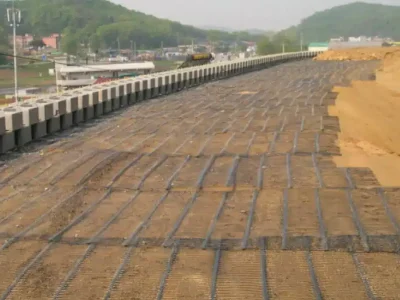
Soft Ground Roads & Rail
Basal reinforcement and load-transfer; reduced differential settlement.
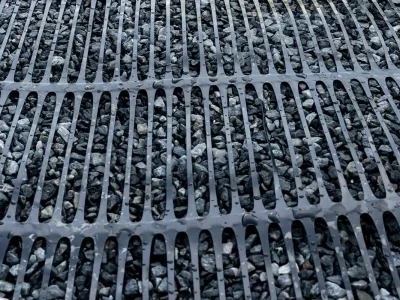
Mining & Heavy Industry
Haul roads, platforms, leach-pad subgrades with high one-direction tensile demand.
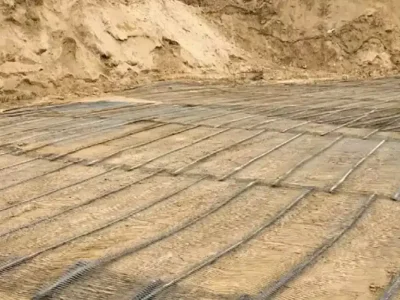
Landfills & Environmental
Perimeter berms, side-slope anchorage, stabilized haul/maintenance roads.
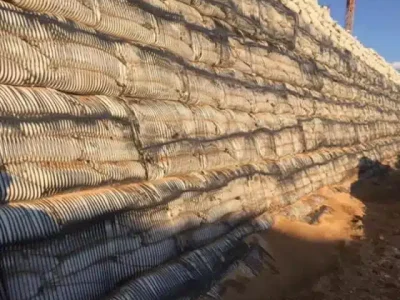
Retaining Walls & MSE
One-direction primary reinforcement; taller walls with less lateral movement.
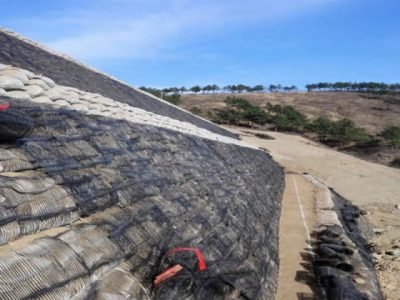
Steep Slopes & Embankments
Slope steepening, veneer stability, erosion facings (TRMs/riprap).
Client Testimonials
Our clients love us, here are a few of their quotes.




FAQ
What materials are used to make Uniaxial Geogrid?
Uniaxial geogrids are commonly manufactured from high-density polyethylene (HDPE) or polypropylene (PP). These polymers offer durability, resistance to UV rays, and long-term stability even in harsh environmental conditions.
What are the main applications of Uniaxial Geogrid?
Uniaxial geogrids are widely used in:
Retaining wall reinforcement
Embankment construction
Steep slope stabilization
Landfill engineering
Road and railway subgrade reinforcement
What are the benefits of using Uniaxial Geogrid?
The key benefits include:
Increased load-bearing capacity
Enhanced soil reinforcement and slope stability
Cost-effective construction with reduced fill material
Long service life due to chemical and UV resistance
How do I choose the right Uniaxial Geogrid for my project?
Selection depends on your project’s soil type, load requirements, and design specifications. Always consider tensile strength, creep resistance, and durability. Working with an ASTM-certified uniaxial geogrid manufacturer like MJY ensures your project meets international standards for performance and reliability.
Can Uniaxial Geogrid be used in road construction?
Yes. Uniaxial geogrids are widely used in road and highway construction to reinforce subgrades, reduce settlement, and improve load distribution. This leads to stronger pavements and reduced maintenance costs.
One Stop Geosynthetics Manufactry Leader
MJY is a trusted geosynthetic manufacturer for over 10 years with our expertise and vast knowledge in the industry.
